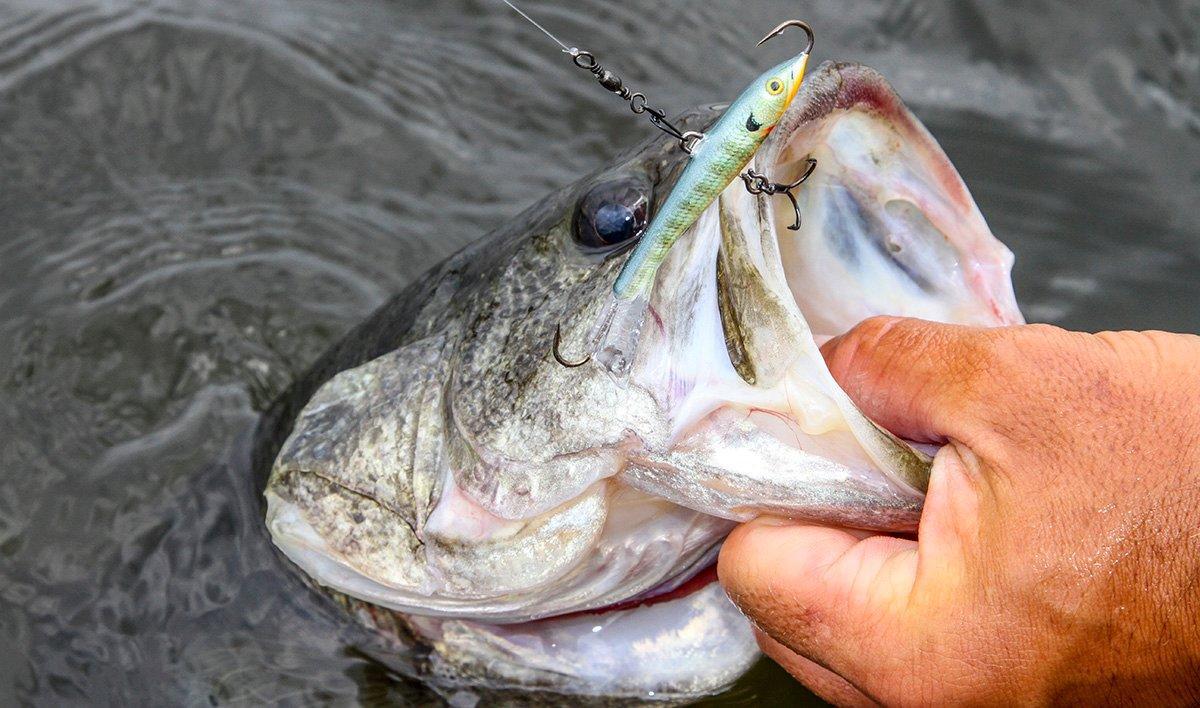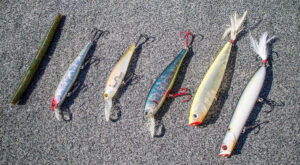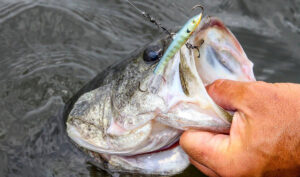Tree houses hold a special place in many of our summer memories. Trees can house many bass in the summer, as well, especially on clear lakes; but it’s less about imagined pirate lairs and secret handshakes and more about the habitat preferences found in deep wood.
Emergent, or fully submerged, summer bass favor flooded trees. Bassmaster Elite Series pro Brent Ehrler is partial to the deep trees found in highland reservoirs like those of the White River, where old cedars sport extensive limb structures. In any case, waterlogged wood offers luxury suite accommodations for bass.
“Fish really do key on submerged trees because they create everything they want — a lot of shade, a lot of cover,” Ehrler said. “It gives them an area where they can sit at whatever depth they want to be at on that piece of cover. They can be over 30-40 feet of water but only 5 feet deep.
“They can be in deep water really quickly, they can be in shallow water really quickly and there’s the whole food chain. You have the algae on the trees, you have the baitfish that eat the algae, and the bass eat those baitfish.”
WHEN AND WHERE TO FIND GOOD TREES
Across the board, Ehrler expects to find the fish sitting shallow during the low-light periods of morning, evening and cloudy conditions. It’s basically a heat and brightness thing, so clear days see the fish sinking deeper as the clock advances.
While size offers no guarantees, Ehrler gravitates toward denser trees—the ones with more structure and thereby more cover and shade. Further refining his search, he targets the trees of transition.
“I’m going to look for trees that are on some sort of point or a drop or a creek channel,” Ehrler said. “If there’s just a forest of trees, the fish will be where there’s a change on the bottom.
“Sometimes the fish just filter through the trees, but isolation is a big thing. The isolated trees are the ones that are next to some break in the bottom contour line or next to a creek channel. If you see a big gap and then one single tree, they will be on that one single tree.”
CATCHING FISH ON DEEP WOOD
Ehrler likes the ability to cover the entire range of where fish might be. When fish are higher, he’s not afraid to walk a Lucky Craft Gunfish right through the trees—even the emergent ones. He simply picks his lanes and works the bait across open water.
Reaching deeper for suspended fish calls for a Lucky Craft Flash Pointer 100 jerkbait or a 3 1/2-inch Yamamoto swimbait on a 3/8- to 1/2-ounce BOSS swimbait head.
With a swimbait, he’ll cast beyond particular trees, let the bait sink to the bottom and then retrieve it on an upward angle so the bait rises across the tree’s midrange.
If a lot of submerged wood is too snaggy, he’ll “thread the needle” by casting his swimbait closer to the target, counting the bait down to the target range and retrieving it clear of the problem zone.
Ehrler might also show the suspended fish a more subtle look by dropping a wacky-rigged 5-inch Senko to their depth.
“A Senko will fall slowly and stay in the strike zone longer,” Ehrler said. “I’ll cast to the outside edge of a tree and let it sink. If they don’t bite it in the first 10 seconds, I reel up and make another cast.”
To reach bass at the base of trees, Ehler likes a 5-inch Thin Senko for his Texas rig, but he’ll also send a drop shot with Roboworm into the shadows. With any of these bottom baits, Ehrler adjusts his presentation to the target.
“If the tree has a lot of branches, I’ll cast around the outside,” he said. “Sometimes, they’ll only bite next to the trunk, but if you drop down through the branches and a fish bites, you’ll never get him out. Most of the time, they’ll swim out 5-6 feet to get a bait.”
COOL DEAL FOR HOT TREE BASS
Elite pro Brandon Palaniuk does plenty of ice fishing each winter, but deep timber often has him reaching for one of his favorite hard-water baits—the Rapala Jigging Rap. Built with gliding fins for crazy action and a center treble hook complementing a fixed single at each end this fast-falling bait comes in bass-friendly 5/8- and 7/8-ounce sizes.
“The reason it really shines in standing timber is that a lot of time those fish are suspended in the branches that are maybe halfway up the tree,” Palaniuk said. “Some lakes have standing timber in maybe 60 feet of water and those fish will sit 20-30 feet down.
“The Jigging Rap gives you the ability to get over top of those fish and drop it straight down to them. That bait creates an erratic action but it stays in the strike zone the entire time.”
Palaniuk always starts with a vertical drop.
“If the fish are suspended, that bait falls so quickly, it’s nearly impossible to fish horizontally,” he said. “You’d have to fish it so fast that it would blow through the strike zone.
“Also, you have three open hooks, so it does not do well in a casting situation. Fishing vertically, you can control it better. You can see it on your graph and control where it’s at in the timber.”
“Nine times out of 10, I’ll quickly snap the rod tip and that’s going to cause the bait to dart right or left, forward or backward,” Palaniuk said. “I’ll follow it back down and as soon as it gets to the level that I want it, I’ll pop the rod tip right back up.
Ideal positioning is level with the fish’s eyeballs, or slightly above them. Suspended bass are mostly looking up, so keeping the bait in their field of vision is imperative.















